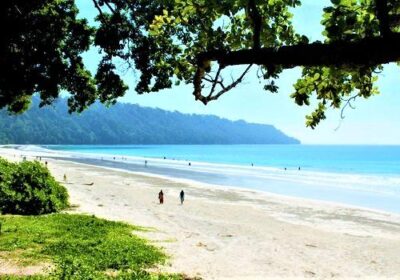Santhal Parganas: Exploring the Heartland of Tribal Heritage in Jharkhand
The Santhal Parganas, a region in the state of Jharkhand, India, is known for its rich cultural heritage and diverse tribal communities. Comprising several districts, including Dumka, Deoghar, Jamtara, Godda, Pakur, and Sahibganj, the Santhal Parganas offer a unique blend of natural beauty, historical significance, and cultural richness. The region is named after the Santhal tribe, one of the largest and most prominent tribal groups in India.
Ethnic Identity: The Santhal tribe is known for its strong sense of community and vibrant cultural traditions. They have a distinct language, Santali, and are known for their traditional music, dance, and festivals.
Agriculture and Livelihood: The Santhals primarily rely on agriculture for their livelihood, cultivating crops like rice, maize, and pulses. They are also skilled in various crafts and trades, including weaving and metalwork.
Festivals and Celebrations
Sohrai and Baha: The Santhal community celebrates several festivals throughout the year, with Sohrai (harvest festival) and Baha (flower festival) being among the most important. These festivals are marked by traditional music, dance, and rituals, reflecting the deep connection between the Santhals and their land.
Folk Music and Dance: Santhal music and dance are integral parts of their culture, often performed during festivals and special occasions. Instruments like the flute, drum, and banam (a traditional string instrument) accompany their songs and dances.
Natural Beauty and Scenic Landscapes
Hills and Forests
Lush Greenery: The Santhal Parganas are characterized by rolling hills, dense forests, and picturesque landscapes. The region’s natural beauty makes it a haven for nature lovers and adventure seekers.
Wildlife Sanctuaries: The forests of Santhal Parganas are home to diverse flora and fauna, with several wildlife sanctuaries and reserves that protect the region’s biodiversity. Visitors can explore these sanctuaries to experience the rich wildlife and natural beauty of the area.
Rivers and Waterfalls
Rivers: The region is crisscrossed by several rivers, including the Ganges, Brahmani, and Mayurakshi, providing a lifeline to the local communities and adding to the scenic beauty of the area.
Waterfalls: The Santhal Parganas are dotted with numerous waterfalls, offering breathtaking views and opportunities for trekking and picnicking.
Historical and Religious Significance
Historical Landmarks
Freedom Movement: The Santhal Parganas played a significant role in India’s struggle for independence, particularly during the Santhal Rebellion of 1855-56, led by tribal leaders Sidhu and Kanhu Murmu against British colonial rule.
Monuments and Memorials: The region has several monuments and memorials dedicated to the heroes of the Santhal Rebellion and other historical events, providing a glimpse into the region’s rich past.
Religious Sites
Temples and Shrines: The Santhal Parganas are home to several temples and religious sites that reflect the spiritual diversity of the region. These sites attract pilgrims and tourists alike, offering a blend of cultural and spiritual experiences.
Deoghar: Known as the “cultural capital” of the Santhal Parganas, Deoghar is famous for the Baidyanath Temple, one of the twelve Jyotirlingas in India. The temple attracts devotees from all over the country, especially during the Shravan month.
Practical Information
Best Time to Visit
Winter Season: The best time to visit the Santhal Parganas is during the winter months (October to March), when the weather is pleasant and suitable for exploring the natural and cultural attractions of the region.
Getting There
By Road: The Santhal Parganas are well-connected by road, and visitors can reach the region by private car or local transport from nearby cities like Ranchi, Kolkata, and Patna.
By Train: Major towns in the Santhal Parganas, such as Dumka and Deoghar, have railway stations that are well-connected to major cities across India.
Accommodation
Hotels and Guesthouses: There are several accommodation options available in the Santhal Parganas, ranging from budget guesthouses to mid-range hotels, providing a comfortable stay for visitors.
Tips for Visitors
Respect Local Customs: Visitors should respect the local customs and traditions of the Santhal community, especially when participating in cultural events or visiting tribal villages.
Eco-Friendly Practices: Follow eco-friendly practices, such as not littering and minimizing the impact on the natural environment.
Conclusion
The Santhal Parganas, with its vibrant tribal heritage, natural beauty, and historical significance, offer a unique and enriching travel experience. Whether you are interested in exploring the rich cultural traditions of the Santhals, discovering the scenic landscapes, or delving into the region’s history, a visit to the Santhal Parganas promises an unforgettable journey. Immerse yourself in the heartland of tribal heritage and discover the timeless beauty of the Santhal Parganas.






Leave feedback about this